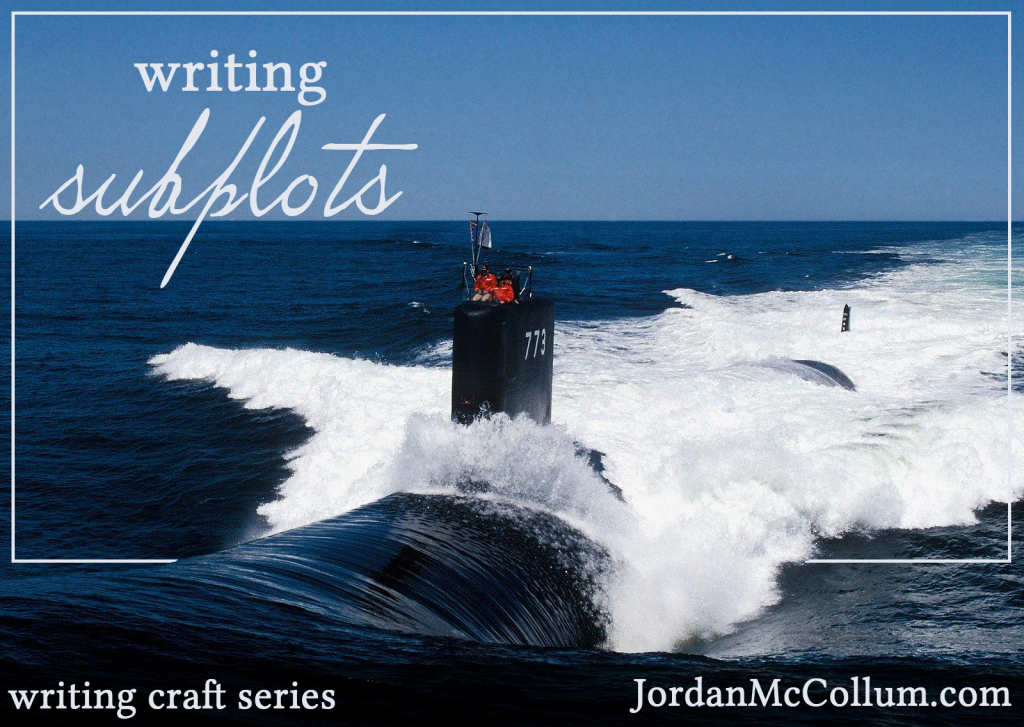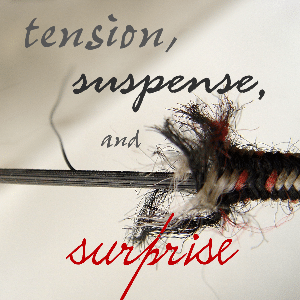When you just can’t let go
We’ve all been there—a character, a scene, or an entire subplot that we know isn’t really vital to our story. We need to cut it. But we . . . can’t.
Good news: you may not have to. It will be a lot more work, but if that extraneous subplot is something you truly love, you can make it work in your story.

Purposes of the elements of fiction
If we really have to keep a subplot, what do we do to make that subplot matter? Like the larger and smaller units of fiction, subplots must serve a purpose. For example, on the Writing on the Wall blog, author Annette Lyon lists six of the most basic purposes of a scene:
- Advance the plot
- Create or show conflict
- Set the setting
- Reveal character
- Show backstory
- Lay groundwork for later plot
The purposes are the same or similar for subplots. Numbers 1 and 2 on this list are probably the most important in any sort of commercial or popular fiction. In fact, Annette says that most of your scenes should have #1 or #2 as a purpose—in addition to one of the other six.
If nearly every scene should advance the plot and/or create/show conflict, in addition to developing another aspect of the story, we should strive to accomplish that in our subplots and their scenes as well. A subplot just for character development isn’t enough of a purpose.
Making subplots matter
When you truly cannot cut the subplot, what do you do? You make the subplot matter.
First of all, look at the list of subplot purposes above (and add to it if you really need to). How can you add those purposes to your subplot?
When I’m trying to make a scene matter, I ask myself these questions:

- What is the character’s goal for this scene?
- How can things get worse?
- How can I raise the stakes?
- What is the source of conflict in this subplot and how can I make the conflict bigger?
- What is going on in the scenes surrounding each subplot scene, and how can the subplot affect and interact with those scenes?
- How can I weave in the antagonist, the plot, or a character turning point?
The final point here is the one that I’ve used the most. With all these questions, we want to look for ways to better tie the subplot into the central story and characters. Incorporate the themes or the character arc more, heighten the conflict and the suspense, affect the trajectory of the main plot, etc.
How I’ve done this
Yep, I’ve been there done that!
When I was rewriting the book that will be my first published novel, I knew I needed to amp up the mystery plot (and tone down the romance plot a bit). So I went through each scene, specifically looking for a way I could increase the tension and suspense, raise the stakes and bring in the antagonists more.
Where could I tie in the antagonists? Could they appear in more scenes? Could they make more threats? Could they be watching, waiting, this whole time? What are they doing? How does that affect my main characters’ thoughts and actions? You may need to edit scenes that aren’t currently involved in the subplot to add these characters or ideas in, or you might have to write entire new scenes.
For another example, a couple years ago I pulled out a book I’d written almost 3 years before, ready to revise. I’ve already edited it a bit, so just about all of the scenes are in there for a good reason (though I can see I hadn’t really grasped scene goals at the time). However, some sections of the book really dragged, so I brainstormed how to draw in the antagonist more, how to keep the threat present and how to raise the stakes.
In this particular book, I decided that showing the villains’ subplot through their POV was the perfect solution. Whenever the main characters’ story began to turn more toward the internal, emotional side (and the external threat waned), I showed the villains working toward their objectives, reminding the reader that they were still there.
If you’re making substantial changes to a subplot or secondary character, be sure to reread the scenes involved (and any changed or new ones). Make sure the edits still track with each other as well as the story as a whole.
What do you think? How else can you make your subplots matter?
Photo credits: SOS—Carlos Rosas; question mark—Alexander Drachmann, both via Flickr & CC













